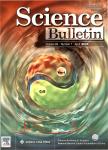Photochemical alteration of biogenic particles in wastewater effluents
Photochemical alteration of biogenic particles in wastewater effluents作者机构:SYSU-HKUST Research Center for Innovative Environmental Technology (SHRCIET) School of Environmental Science and Engineering Sun Yat-sen University Guangdong Provincial Key Laboratory of Environmental Pollution Control and Remediation Technology Department of Atmospheric Science School of Environmental Science and Engineering Sun Yat-sen University
出 版 物:《Chinese Science Bulletin》 (科学通报(英文版))
年 卷 期:2014年第59卷第28期
页 面:3659-3668页
核心收录:
学科分类:083002[工学-环境工程] 0830[工学-环境科学与工程(可授工学、理学、农学学位)] 08[工学]
基 金:supported by the New Century Excellent Talents in University from the Ministry of Education of China (NCET-11-0537) the Fundamental Research Funds for the Central Universities (12lgpy52)
主 题:生物颗粒 废水排放 光化学 有机物质 污水处理厂 聚甲醛 蛋白质 比表面积
摘 要:Biogenic particles discharged by wastewater treatment plants play important roles in receiving water because of the large specific surface area and good mobility of the particles. In this study, the changes induced in biogenic particles by natural sunlight were investigated to understand the phototransformation of the particles in the receiving waters. The results showed that photoexposure resulted in significant decreases in the sizes of the biogenic particles but that photoexposure did not impact the zeta potentials. In addition, the photodissolution of biogenic particulate organic matter(POM) led to the generation of biogenic dissolved organic matter(DOM). Characterization using excitation–emission matrix(EEM) spectroscopy showed that photoexposure changed both the shapes and the intensities of the EEM spectra of the biogenic POM; the regions of the T1 and T2 peaks were susceptible to photoexposure. Modeling by parallel factor analysis(PARAFAC) decomposed the EEMs of the biogenic POM into four valid components, i.e., terrestrial or microbial humic-like substances, tryptophan-like proteins, tyrosinelike proteins and hydrophobic proteins. The humic-like substances in the biogenic POM from the effluents were subject to lower decreases(17.0 % and 11.6 %).Throughout the entire incubation time, the PARAFAC components in the biogenic DOM were dominated by elimination mechanisms rather than by production through photodissolution of the biogenic POM.



